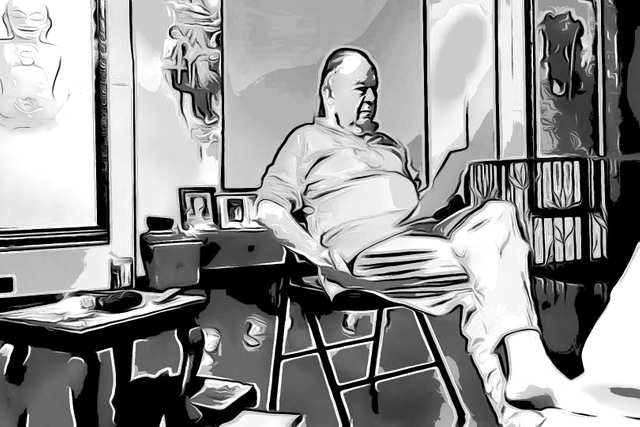
Jean Couteau presented at Usada in Ubud, Bali, "Balinese love and sexuality" from a philosophical and social point of view, enlightened by reference to stories and erotic illustrations.
He challenges all ideas you have had to this day regarding love and sex. Love as a cosmic moment. Peeping, sex to enable the god of the mountain to impregnate your wife, the role of the motorbike in sexual imaginary and more.
Jean Couteau is a writer, historian and columnist specialised in Balinese culture, art, myths and history. Living in Indonesia in 1972, Jean got captured by Bali through its complex and enthralling history and culture.
Growing up in a family which was strongly influenced by art and culture, Jean developed his own perspective about humanity in terms of history, culture, tradition and art. In 1986, Jean received a doctoral degree for his thesis of art history and iconographic art of Bali.
From his perspective, art is the pinnacle of personal expression, it is a way to speak out about personal feeling or social problems by promoting subjectivity.
“The medium can be anything; painting, writing, dance, sculpture and else. Cultural heritage and technical skill are important elements of art. However, understanding the past and what transcends it is the key of art,” Jean Coteau says
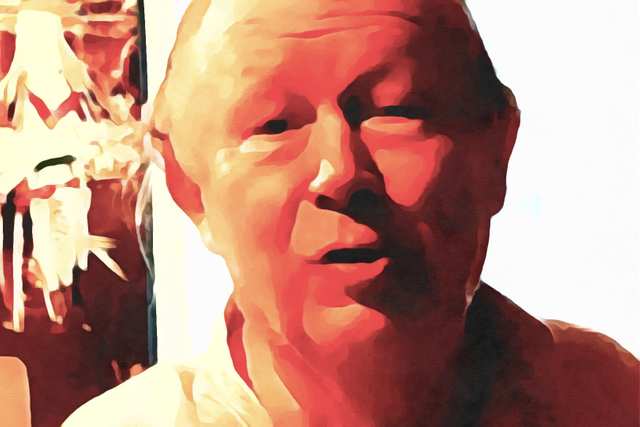
These days he continues observing and writing about Balinese culture, art, myths and history. His meticulous writings about fascinating Balinese myths, culture and history can be read in the several books he wrote, as well as in the balinese NOW! Bali magazine and the Indonesian national newspaper Kompas.
Here is what Jean wrote
In most societies, when you make love, you keep busy with yourself and your partner, and you don't pay much attention to the world around, least it deflates you. The main thing is really to 'make it', at any price, I should say, and with the minimum damage to your ego.
You want to unite, to merge in your partner, because it is the purpose of the whole thing. You don't make a lot of fuss about it. You just carry on, happen what may!
In Bali, however, things are different. Making love, uniting with your partner, takes a different meaning. First, and you may not like it, when you make love, you are never alone.
Your love making involves not only both of you, and the not un-frequent peeping crowd, but also the cosmic forces your action is unwittingly activating. Don't forget that you are a microcosm within the macrocosm.
"When you are in the act, the god of love, Asmara, is also in the act with his beloved the goddess of the moon, somewhere over there."
So you better behave, lest you cause some disruption in their relationship. This entails constraints.
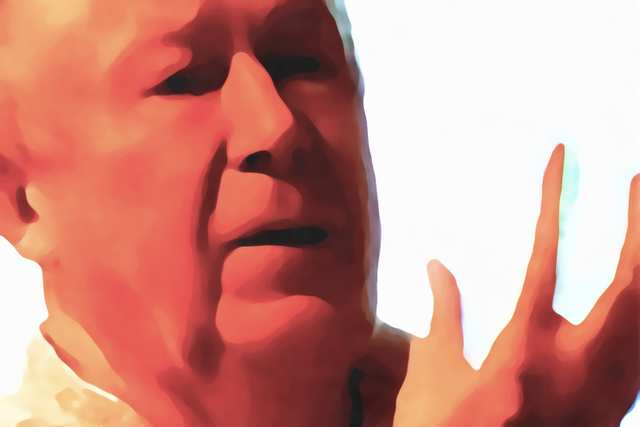
For example there are days and moments where you should abstain. One does not make love during the Balinese week dedicated to the incestuous son Watugunung, the Balinese equivalent of Oedipus which happened to be the week of Trump's inauguration.
Making love during this week would besmirch the cleansing under way. I wonder whether Trump took this into account. It might explain a few things.
There are other taboos as well though. Some are related to time as calendar days, or moments of the day. For example you may not make love at day junctions: sunrise, midday and sunset, for the demonic butas are out, and you may fall prey to them, which means your offspring will turn out to be a small demonic being.
For similar reasons you should take into account the place where you perform. Don't make love in a garbage disposal. It will have consequence on the body odour of the upcoming child.
All this due to karma. Yet, there are, as always, exceptions. For example one of the best ways to become a leyak is to go to a cemetery in the middle of the night, to exhume a 'fresh' woman's corpse and to make love to her.
With the proper mantras, of course. Or else. If you manage to do that properly, your powers will go unchallenged by anyone for a long time.
To put back things in the right order, and not become overly lewd in my writing, I must add that love making should not be gratuitous.
It has a meaning, to keep things in balance during one's life between the goals of life: artha-accumulation of earthly goods, dharma or virtue and kama or pleasure, in order to achieve the fourth and ultimate goal, moksa, merging into the cosmic whole even though there is a good change that you will miss it and come back to earth after a long or short punishment into Balinese hell.
Once there, I warn you... if as a man you had many lovers, you will be sentenced to shoulder-carry pierced coconuts. But if you are a woman it is much worse... a demon may insert a burning torch into your genitals or worse.

There is patriarchy even in Balinese hell. How to bring feminism to hell and empower women there?
Once a soul is in hell or, after punishment, it is not clear-waiting somewhere, as an ancestor, in the 'Old Country' above the mountain, it has to come down to earth for another attempt at achieving moksa... For that, things should be organised properly on earth, in the so-called 'Middle-World', and by your descendants.
Let us say you are one of those descendants. You will yourself need children to perform their own duties toward you.
So how do you do? You go with your wife to one of your ancestors' temples and there, you present a few offerings, then meditate, beseeching the right ancestor(s) to come down.
Then you go back home, and you do what you have to do, not forgetting to utter a short mantra, and, in some instances, to address small yellow rice grains to the demonic forces around.
Never ever forget it, because the little bastards are very nasty. If you mistreat them, they may turn you impotent, if you are a man of course.
But let us go back to what you did: when making love, you united what the Balinese call the kama petak, white kama and the kama bang, red kama the cosmic forces at the origin of human life.
The next day, when you and your wife go to the ancestors temple, she may well shudder all of a sudden: the sign that an ancestor is coming down to incarnate, a little dewa god the Balinese will say.
The rest will be a matter of proper behaviour and right offering. And be relieved, the partner you find in your life may well be a soul you got indebted to while both of your souls were in hell. Karma is creating karma.
But warn you. There is nothing romantic in Balinese traditional love. You will be told to beware of women.
After all, their vagina is bluntly quoted in classical literature as being a "year-long incurable sore, which causes the world to go "banana". And they are "eight times more resistant" in love making.
But, forgetting the nasty side of it, perhaps it is the reason to make another try at it, at the right time, in the right place, and the right kamasutra cosmic positioning. Of course.
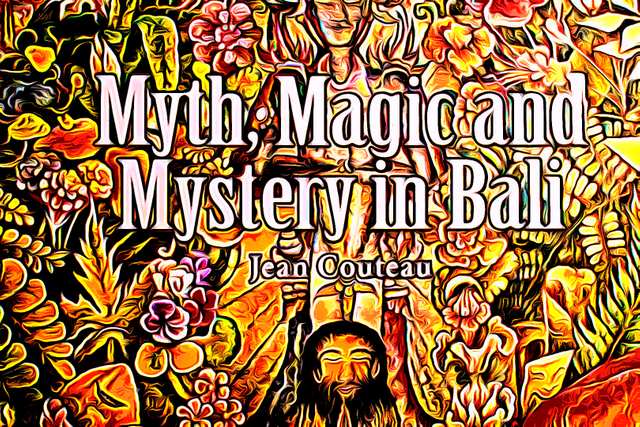
SEX IN BALI
Sex in Bali is closely linked to the agrarian tradition of fertility. A sexual expression that looks to the observer blunt and naive may also be highly symbolic. On the naive side, the Balinese are made aware very soon of their sexual being.
It starts very soon in the nickname given to a new-born baby before any 'official' name is attributed to him or her.
Thus boys are often called I Butuh or I Kocong, 'testicles' whereas girls are called Ni Lueng, Ni Kembung, names that refer to female parts.
Those nicknames, which connote nudity, are often taken over by the parents, who end up being called Men Butuh 'Testides Mother' or Nang Lecir 'the Erected One's father'.
For some reason, today's Balinese don't use those names any more. But the Ubud of Lempad days still ignored state sponsored 'moralisation' of the kind that exists since the New Order days.
This awareness of sexuality is deeply rooted, through symbolism, in the mentalities of old. As in other agrarian societies, Earth is the Mother Goddess, Pertiwi, provider of food and symbol of fertility.
Its complementary opposite, with which it comes into union, is the Sky, Father Akasa, the symbol of the fertilising elements. This belief sometimes leads to magic religious manipulations.
The Balinese peasants who intend to plant vegetables may stick a stump of wood into the earth to fertilise it, thus maintaining the unity of the cosmic sexual poles. Men and women can manipulate those symbols for their own purposes.
In some villages it was until recently common practice for unmarried women to lie on their back and implore Father Akasa to bestow upon them a mate, as it was for women to lie on their belly and address Mother Pertiwi. As if there were a union of men and women with their cosmic partners.
Those social symbols and behaviours have a long story behind them. Archeologists have discovered in Bali sarcophagi shaped after women in the coital position. On the famous nekara bronze drum of Pejeng, next to Bedulu, one finds the etching of a frog with a similar female symbolism.
And everywhere there are phallic menhirs and stones whose symbolism is clearly pre-Hindu, usually set side by side with an object -a split stone for instance-that symbolises the female component.
Many of these objects have been integrated within the paraphernalia of Balinese temples as part of local cults of fertility.
They are worshipped in relation to agricultural events or when a patient is beseeching forgiveness or healing from the world from beyond". The sexual connotation of these objects is usually made very obvious.
The village of Kayu Putih, for example, has a "deity" shaped as a 25cm penis and called by the blunt name of "Dewa Gede C.K Kontong, this name being the Balinese expletive for the male organ.
Worth noticing is that this tradition has not been eradicated by Balinese Hinduism, but integrated as part of its symbolic corpus. Shaivite Hinduism, is practiced in Bali since the end of the first millennium, also uses phallic and vaginal symbols.
Pertiwi and Akasa, as explained earlier, are names of Hindu gods indeed, even though the cult of the earth and sky certainly predates their naming by Sanskrit names.
But Shivaism, although it broadly uses sexual symbols: the lingam and the yoni, the sea and the mountain, sets them in the midst of a highly sophisticated cosmology and philosophy.
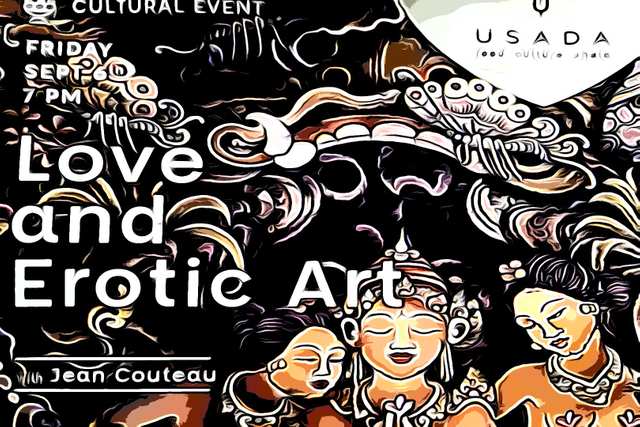
The Universe Bhwana Agung, according to Shaivism, stems from the union of the Purusa, 'the shiva linga' and of the Pradana, 'the yoni'. Symbols of spirit and matter, of male and female, of the necessary union of Rwabhinneda,'cosmic opposites' that generates the movement of the cosmic Unity.
Thus sexuality, in Ball, like elsewhere, goes well beyond sex. Beyond those symbols, there were also the sexual practices, both those of the Balinese, and, after the turn of the century, those of the Dutch colonies and European visitors to Bali.
On the Balinese side, and the 'negative' aspect of it-one must note that sex was not always romance, nor symbols. There is for example a long tradition of sexual violence, usually as pele gondang/nganjuk, 'abduction/rape' followed by marriage.
While disapproving it, one Balinese informant justified it to the writer as a necessity inherent to the Rwabhinneda. Referring to literary sources, Vickers assesses that sexuality and power often go together the language of sex is one of war and conquest-of piercing' and 'stabbing with love arrows' so that the woman 'dies'.
At another level, and whether they liked it or not, it was the custom for pretty girls, until at least the first decades of the 20 century, to become female attendants penyeroan at the local puri palace, where they would unavoidably end up as princes' concubines. This happened to the daughter of Lempad, who had a famous fall out with Tjokorda Raka Sukawati on the subject.
In Lempad's days as today, this sexuality was etero - as well as homo sexual. This latter fact is well known from Walter Spies's tangles with Dutch justice in the pre second world war years. But this homosexuality was in no way a western import.
Anak Agung Made Djelantik, a 1916-born prince-cum-docter from the Karangasem puri, is reported to have said in a 2003 interview that 'among Balinese, nobody ever mentioned that homosexuality was imported from the West. It has been here since ancient times.'
Adrian Vickers indeed further confirms that 'On Bali homosexuality was not a matter of sexual condemnation, simply a pastime for young unmarried men.'
Even though this is not in itself linked to homosexual behaviour, it is indeed an established fact that Balinese men and women, are used to intensely communicating with one another through touching and hugging in ways that might sometimes lead to homosexuality.
Yet, if one believes the writer's best informant, Lempad's great-nephew Gusti Nyoman Darta, who was a young palace servant in Lempad's old days, one cannot conclude that both sexual violence and homosexuality are considered 'normal' nor escaped social control.
They might be deemed philosophically 'necessary and hence justified as reality', but they are nevertheless perceived as signs of gumi sane wayah 'loss of balance in the world' and hence leten, 'impurity'.
Sexuality is indeed part of the complex system of Hindu-Balinese cosmic order, and it involves the relation between the Bhwana Agung 'Universe as a whole' and the Bhuana Alit, 'human microcosm'.
The Rwabhinneda principle of complementarity of opposites applies to the complementarity of male and female as well as to the complementarity of the 'positive' and the 'negative'.
If there are prayers to properly accompany it, there are cleansing offerings together with mantras, to exorcise its "negative aspects and thus restore the disturbed cosmic balance.
In Lempad's time, the perceived existing imbalance was not anymore simply that of Bali and and one caused by the deeds of the Balinese.
The Western-run world at large now directly impinged on the world such as traditionally known to the Balinese.
There had been the political intrusion of the Dutch at the beginning of the century, which had shaken the balance of power and was modifying the way the economy was run and culture was thought.
Then, the 1917 earthquake, qualified by the Balinese as the laier qumi Bali ,'shaking of the world', had been a godly sign of cosmic disturbance.
And now there were all those foreigners men, and even some women, coming to Bali with their sexual mores and demands.
Walter Spies and his soft approach of Balinese boys. Dutch official vulgar hunt of native women. All this pointed to a cumulation of signs that gumi suba wayah, 'the world was (indeed) old' and approaching Kaliyuga, the last cosmic era of Hindu tradition, that of destruction.
It is in this context of Rwabhinneda's principle of reality as both complementarity and balance of opposites-that Lempad's words should be understood. 'To Lempad, sex exists as such', says his great nephew Gusti Nyoman Darta, all men and women need it and want to achieve pleasure.
His works show it as it is, either bluntly or metaphorically. He can show bamboo pole or a squirrel making a hole to a betel nut, but he can also be cruder, like in the 'book' of erotic drawings he made for our prince just to arouse the latter's deflated sexual organ.
"He made the drawings, but it was I who was entrusted with the preparation of the concoctions," he concludes with a laugh, obviously recalling his youth years as a palace attendant, when he was in regular contact with the old artist.
He can show a monkey masturbating with a bamboo pole or a squirrel making a hole in a betel nut, but he can be also cruder, like in the book of erotic drawings he made for the prince just to arouse his deflated organ.
'He made the drawings, but t was I who was entrusted with the preparation of the concoction', he concluded with a laugh, obviously recalling his youth years as a palace attendant, where he was regular with the old artist.
Regarding the violent and homosexual side of Lempad's drawings, Adrian Vickers further pinpoints that the artist certainly wished to express, beside reality, the cosmic loss of balance referred above:
'Lempad, at least in part, is connecting homosexual acts with the age of instability in which he found himself. It was not morally wrong at least in the Western sense of the word, JC, but its public importance was a symptom of an age of indulgence where the moral order was changes undergoing rapid changes'.
Summing up things, we can say that Lempad was a witness of his days and culture, with a philosophical Balinese slant and a new, modern look at reality.
_What about style? He certainly drew representation found in lontar Kama Tatwa manuscripts as well as in classical temple reliefs and paintings-such as those one can see at the series, the form is here more varied freer and much more realistic.
On the whole, Lempad goes well beyond the traditional patterning of that characterises pre colonial Balinese art to enter an individual kind of expression the some of its elements from the tradition of sexual
Kerta Gosa Hall of Justice in Klungkung. But, as in his other series, the form is here more varied, freer and mnore realistic. On the whole, Lempad goes well beyond the traditional patterns of images that characterises pre-colonial Balinese art to enter an individual kind of expression the questioning of form and theme of which already announced the onset of modernism.
The expressions of the characters show perfectly well their specific roles, lesbians with masculine attitude, homosexual men with large phalluses as exaggerated clitoris in a more focus of their pleasure, aggressive erotic gestures infringing subtle pain such as biting and wiping or the use of objects like mirrors or substances such as opium to enhance the pleasure.
Some of these drawings show beauty characteristic of the master. Once confronted for the first time to some of these drawings, one cannot but be struck by their artistic quality, has to first unnoticed and only slowly discover the subject per se.
This is especially true in the master piece, 'Two Women Interacting' Pt number 167, where the composition of the two characters intermingle in perfect balance with the character on top performing an aerial almost dance posture that gives movement and beauty to the act and thus counterbalances the exaggerated female sexual attributes.
The empty space around the figures, which is a recurrent feature in Lempad's work, further enhances this wonderful in gravity sensation and a pureness seldom seen in Balinese paintings.
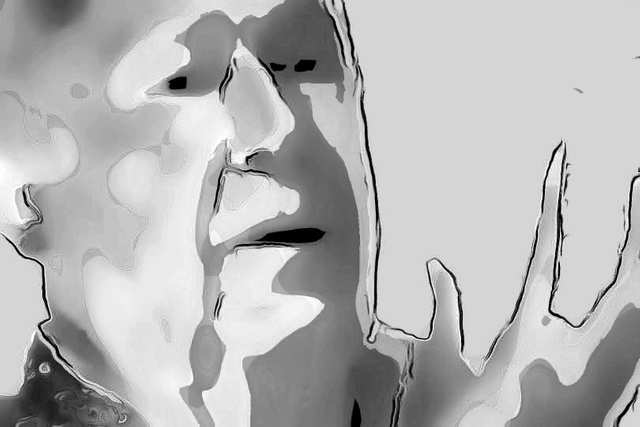
SEX AND MOTOR BIKE
Picture this. Hot day in Denpasar. Heavy traffic. Motorcyclists weaving their way between cars, anxious to turn up at the office on time, then the drivers waiting at a traffic light including me.
A small Honda pulled up alongside my car and I recognised the rider immediately. Komang A, an acquaintance of mine who lectures at one of the numerous private universities scattered around town. In fact, he lectures in English. A good indication of his frame of mind: modern.
"Kija Mang?", 'where are you off to?'. I inquire with the casual and friendly manner common among friends in Bali.
"Cang kar ganti olie", 'the oil needs changing' replied Komang, with a broad smile across his face.
At first, I didn't quite get what ne meant. The bike look brand new and well serviced. With a sense of propriety I'd acquired since I live in Bali, I gave him a wink and asked humorously, "Kenken, Mang? Apa usak monitor ci-e ?", 'Is your bike in such a bad condition?'.
He laughed and, as the light turned green, he blurted out "Apa Kadek sing ngerti? Cang kar ngetap oli. Cang lakar ngalih cewek di KUD.", "Don't you understand? I'm on my way to "change the oil". I'm visiting a prostitute at the Cooperative" - a notorious brothel.
Wise words and before I could say anything else, Komang was gone in a trail of smoke, chasing the dubious pleasure of love purchased.
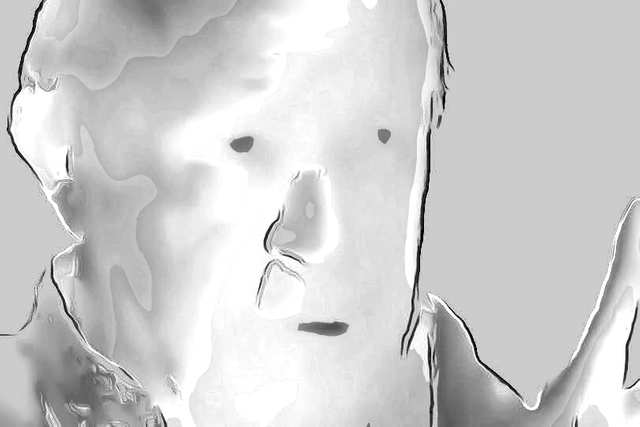
Komang's straightforwardness did not actually surprise me. After all, in villages young boys are casually called butuh, 'little balls' and young girls songkeg, 'little vagina'.
On several occasion as I was peeling a banana, I felt embarrassed when young and innocent girls asked me if my 'thing' was as big as the fruit "Aune duwen Bapak?".
Some old village temple still dedicate a shrine to Batara Celak Kontong, 'penis gods'. Sexual fantasies and symbolism - have had a long history in Bali, to say the least, all predating tourism or racial comparisons.
The interesting thing in Komang's statement though, was less the sexual reference itself than is modernity. Bikes have become so popular nowadays, and cars too for that matter, that the vocabulary of sex is increasingly machine related.
It would be simply uncouth to "make love". Balinese boys, as referred above, prefer ngetap oli, 'to change the oil of their engine'. Or even, to get deeper into the subject, so to speak, bongkar mesin, 'to have an overhaul'!
Sometimes the metaphor is visual: pasang dongkrak, 'boys put the bike on its stand', while girls nyilih dongkrak, 'borrow a bike stand'.
The electrical system becomes also involved to make love is then associated with nyetrum aki, 'rechalging one's batteries'. This is of particular importance as sexual power becomes measured in amperes. Instead of saying that a man is impotent, one refers to his ampere sing mejalan, 'ampere-meter' as faulty.
This somewhat blunt use of mechanical and electrical engineering terms speaks volumes for the deep changes operated in Balinese suicide.
Twenty years ago, love was still a matter of satmaka / tumblilingan ngisep madu, 'buzzing bees sipping the honey of a flower'. Ratih, the goddess of the Moon, was portrayed at her loom, patiently waiting for Asmara, the handsome god of Love.
Apparently, there must be a correlation between the changes in the language of love and the increaser in motor traffic.
Balinese short stories of the seventies are full of beaus riding a bike with a village petite in tow, rushing to the city. She would come back home, almost invariably pregnant, with tears of regret in her eyes. Eventually, some order was reestablished.
Now the use of a bike and of its stand - has been generalised. And with it the nature and the tempo of village love affairs have been radically modified.
In the days of yore, boys and girls would meet at temple festivals and court in the open and with the knowledge of their peers.
There was winking and pinching and, for the lucky ones, some hugging here and there or a furtive embrace.
However, there were always witnesses vouching for the nascent love and pregnancies almost invariably led to marriage.
Now love affairs, with the help of a bike, develop away from prying eyes. The 'nose kiss' has given way to the 'deep kiss', an import from Hollywood, while the local Don Juan's single bike has mushroomed into an Armada From peeping expeditions to the beach to visits to the brothels to sex providers for lonely western women, sexual habits are fast changing.
There is a catch though: changing the oil does not guarantee a safe ride anymore. HIV/AIDS could be lurking around the corner with total engine failure in store.
More infos
Read about Bali’s Myth, Magic and Mystery
Buy Bali’s Myth, Magic and Mystery by J.Couteau
Love and Erotic Art - Usada website
Myth, Magic and Mystery in Bali... with J.Couteau - Jakarta post